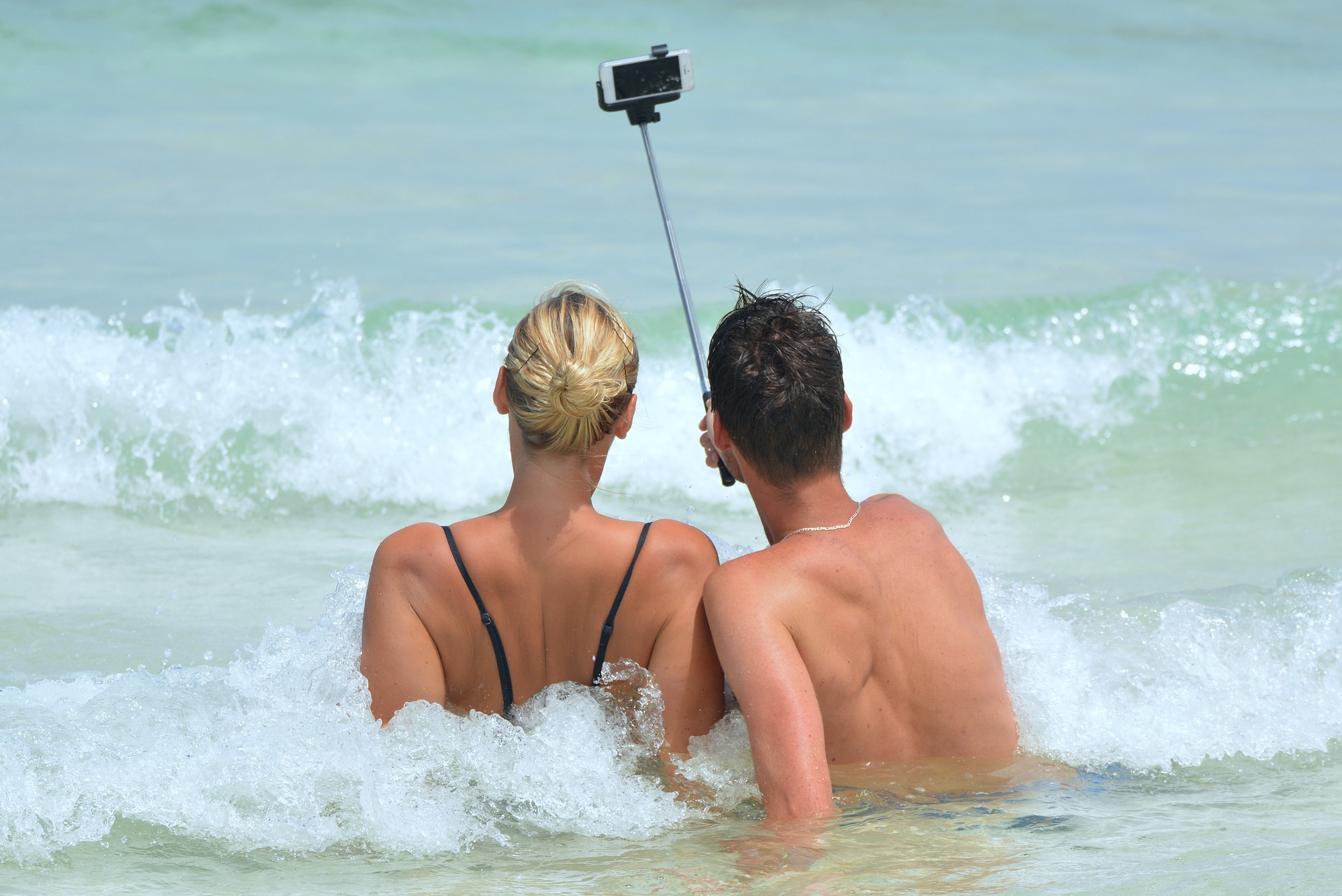Nowadays, for most people everyday life comprises a comprehensive use of modern technologies, communications in the digital world as well as sharing information and content in real time via large number of social networks. Mobile – Smart phones are with us almost all the time but their initial, primary function – telephone conversation – is increasingly giving up in front of other forms of online communication.
The use of modern technology in all aspects of life also inevitably affects the way we view and experience the world and people around us and the way we see ourselves in the environment. Photos of others, and more and more of ourselves, as well as portraits and self-portraits that we make with an unprecedented ease – are provided to us by tools that are no longer the privilege of a small number of people, but the means of mass communication.
The connection between the latest technological solutions and social networks has offered a platform in which a self-portrait gets its own mass version in the form of selfies and its visibility and distribution has been supported by sharing information in real time.
While talking about purpose of selfie, I realized opinions differ over whether the selfie is just a reflection of narcissism or it may represent a process of self-exploration, or a deeper need to communicate with other people through images – photos, reflections of ourselves. In this context, we can easily deal with the question of whether authors, through their selfies, primarily want to “impose” themselves to the views of others or the communication which might be developed from such interactions is also important to them. Thus, here I want to show that, although it is not a novelty in the human desire for (self-)expression, the frequency of the phenomenon definitely takes on a whole new dimension thanks to modern technologies and new media.
People have always felt the need to present themselves to others, but also to themselves, and thus the first known self-portraits emerged along with the improvement of the process of the mirror production during the Renaissance. Until the nineteenth century, they were most often created only by painters like the pioneer of self-portraying, Albrecht Dürer.
The development of technology has enabled more people to capture themselves. We can conclude that the only difference between selfies and traditional self-portrait is that the first does not have to be made by a famous artist, but by any person who subsequently may also become famous after the selfie was being shared on social networks.
Distribution and popularity of selfies can certainly be associated with the mass availability of technologies and platforms that allow them, but there is another aspect, the one that relates to human needs and desires.
The need to present ourselves to others in a certain way, and therefore participate in creating a perception of who we are, also lies in the basis of older versions of (self)portraits. Throughout human history, painting, sculpturing or stonemasonry materials have not always been easily and widely available and those who could afford the resources and talent to create works of art also sought to create their portraits, primarily as a form of documentation. Thanks to technological solutions, selfie excludes “intermediaries”.
From the cultural point of view, we can see selfie can contribute to a better understanding of different cultures, their traditions, the acceptance or rejection of various phenomena. By detailed monitoring of online trends, we can come to the conclusion whether and how a certain attitude and message is expressed through selfie, accepted by people of different genders, ages, economic statuses, etc. In short, selfie can help spread an opinion and accelerate discussion about it.
But let me remind you that documenting personal life situations, statuses and the impact of broader social developments on an individual can be found in the self-portraits by famous painters, too.
Rembrandt van Rijn has been considered as one of the most important painters of self-portraits. He analyzed himself and his life’s ups and downs – trying to document them as closely as possible.
Vincent van Gogh is the author of more than 30 self-portraits.
Let me bring you Frida Kahlo`s example. She represented her mental and physical pain by over-painting her broken body and soul.
People still know themselves best, so it is not surprising that they selected themselves as models that they show and explore.
Addressing the possible link between taking selfies and low self-esteem, dependency and narcissism, I’ve learned from many sources that there is no single reviewed work of scientific literature that demonstrates convincingly that the creation of selfies and mental illness are in some correlation. Based on my experience in communications and marketing business, I really believe selfies in most cases cannot be linked to the development of mental illnesses and the desire to impose on others, but it can be linked to the need that people connect and communicate with others and convey a message to them. Even if we are talking how social media platforms are creating different roles and personae, selfie does not deviate too much from such form of communication applied in the art of earlier periods.
Let me refer to the sentence Warhol wrote in 1980: “Who wants the truth? That’s what business is for – to prove that it does not matter what you are, but what they think you are.”
Self-analysis and understanding of one’s own identity can significantly improve a transparent and open communication with others, where viewing oneself by the eyes of others can also help in the growth and development of personality. In other words, the real power of #selfie lies not in self-promotion, but in the promotion of an idea – and connecting people.
The statements [or testimony] I offer today represent my own personal views. I am speaking for myself and not on behalf of my employer, Microsoft Corporation.


